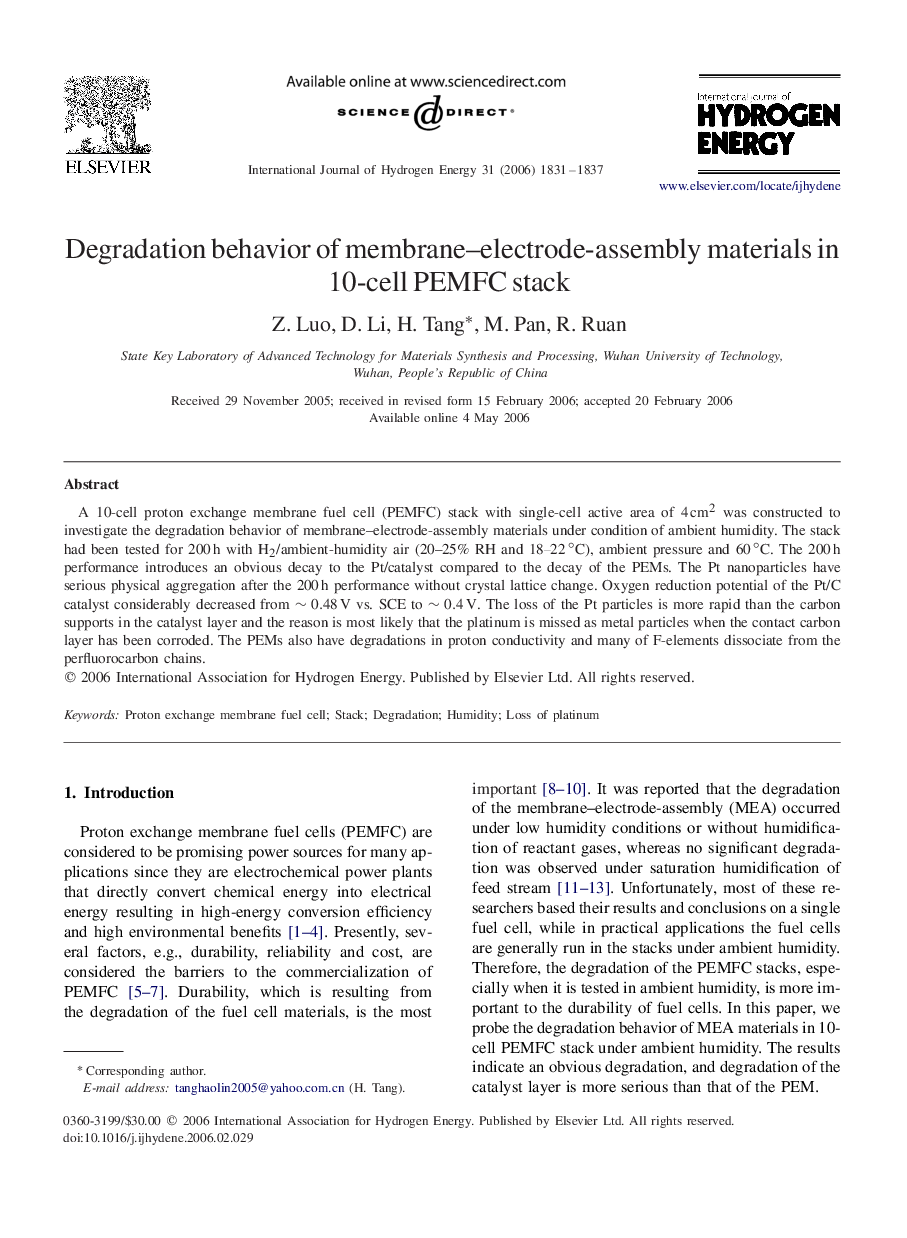| Article ID | Journal | Published Year | Pages | File Type |
|---|---|---|---|---|
| 1281077 | International Journal of Hydrogen Energy | 2006 | 7 Pages |
A 10-cell proton exchange membrane fuel cell (PEMFC) stack with single-cell active area of 4cm2 was constructed to investigate the degradation behavior of membrane–electrode-assembly materials under condition of ambient humidity. The stack had been tested for 200 h with H2H2/ambient-humidity air (20–25% RH and 18–22∘C), ambient pressure and 60∘C. The 200 h performance introduces an obvious decay to the Pt/catalyst compared to the decay of the PEMs. The Pt nanoparticles have serious physical aggregation after the 200 h performance without crystal lattice change. Oxygen reduction potential of the Pt/C catalyst considerably decreased from ∼0.48V vs. SCE to ∼0.4V. The loss of the Pt particles is more rapid than the carbon supports in the catalyst layer and the reason is most likely that the platinum is missed as metal particles when the contact carbon layer has been corroded. The PEMs also have degradations in proton conductivity and many of F-elements dissociate from the perfluorocarbon chains.
